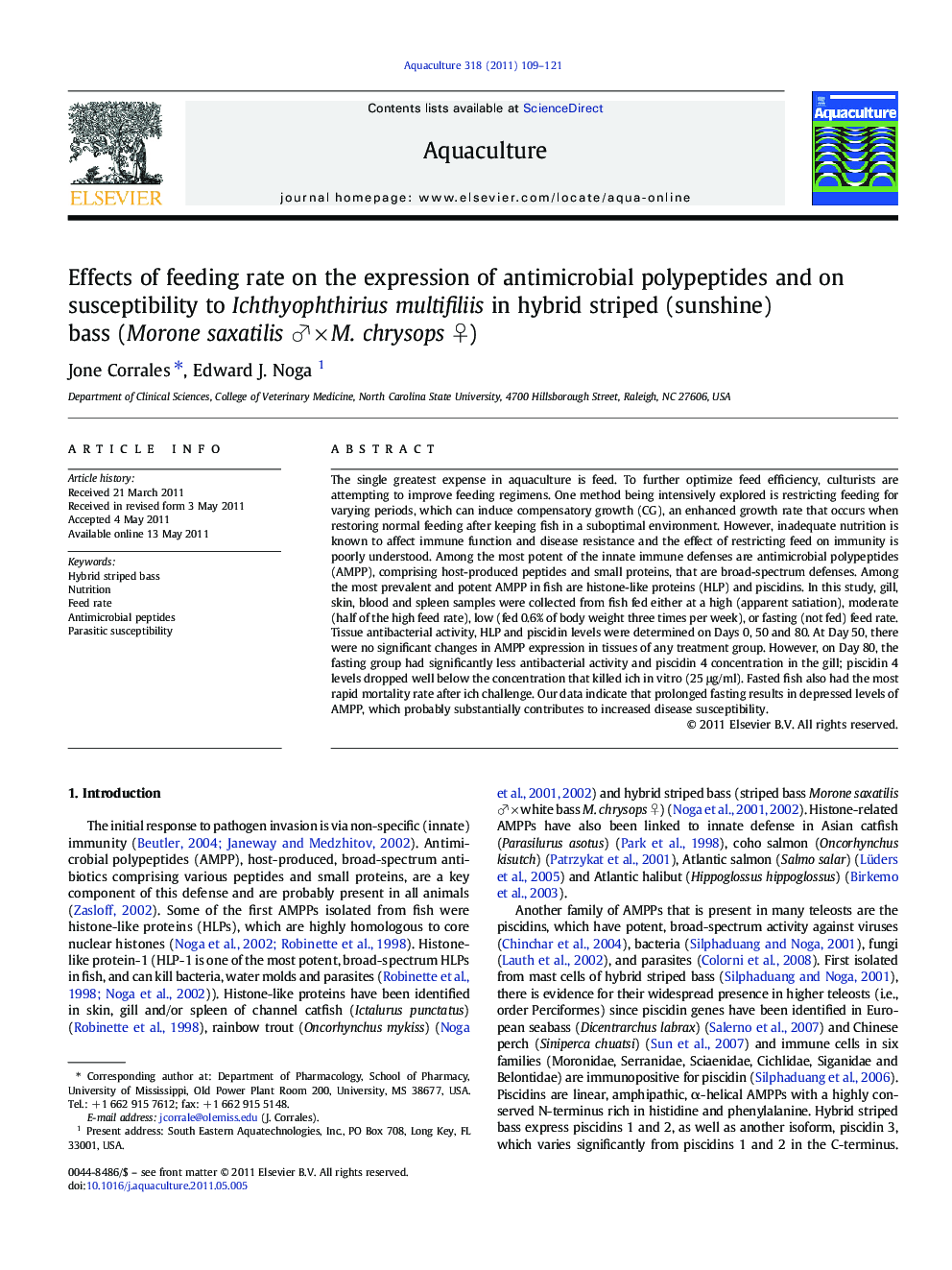| کد مقاله | کد نشریه | سال انتشار | مقاله انگلیسی | نسخه تمام متن |
|---|---|---|---|---|
| 2422909 | 1552906 | 2011 | 13 صفحه PDF | دانلود رایگان |

The single greatest expense in aquaculture is feed. To further optimize feed efficiency, culturists are attempting to improve feeding regimens. One method being intensively explored is restricting feeding for varying periods, which can induce compensatory growth (CG), an enhanced growth rate that occurs when restoring normal feeding after keeping fish in a suboptimal environment. However, inadequate nutrition is known to affect immune function and disease resistance and the effect of restricting feed on immunity is poorly understood. Among the most potent of the innate immune defenses are antimicrobial polypeptides (AMPP), comprising host-produced peptides and small proteins, that are broad-spectrum defenses. Among the most prevalent and potent AMPP in fish are histone-like proteins (HLP) and piscidins. In this study, gill, skin, blood and spleen samples were collected from fish fed either at a high (apparent satiation), moderate (half of the high feed rate), low (fed 0.6% of body weight three times per week), or fasting (not fed) feed rate. Tissue antibacterial activity, HLP and piscidin levels were determined on Days 0, 50 and 80. At Day 50, there were no significant changes in AMPP expression in tissues of any treatment group. However, on Day 80, the fasting group had significantly less antibacterial activity and piscidin 4 concentration in the gill; piscidin 4 levels dropped well below the concentration that killed ich in vitro (25 μg/ml). Fasted fish also had the most rapid mortality rate after ich challenge. Our data indicate that prolonged fasting results in depressed levels of AMPP, which probably substantially contributes to increased disease susceptibility.
Journal: Aquaculture - Volume 318, Issues 1–2, 27 July 2011, Pages 109–121